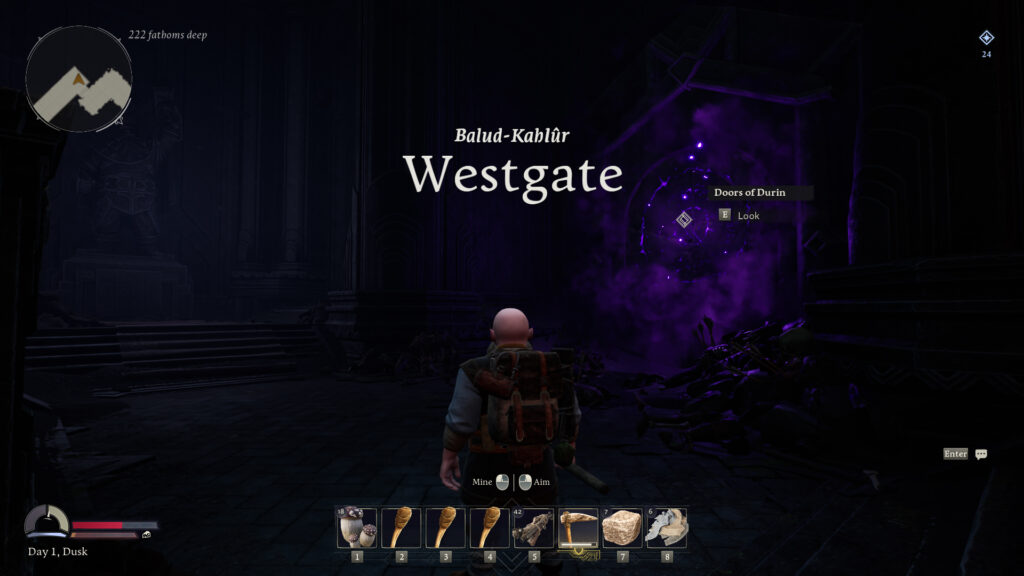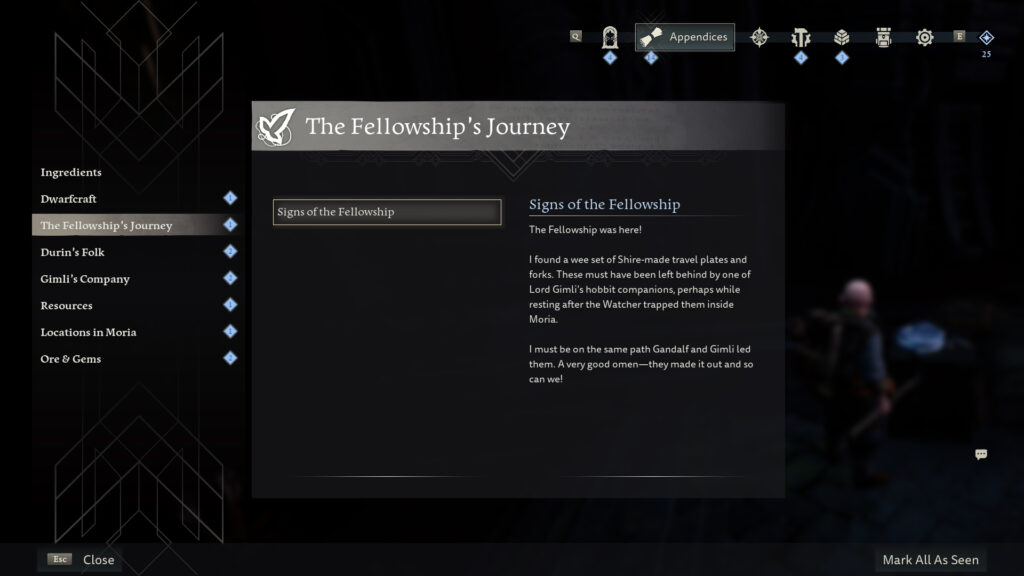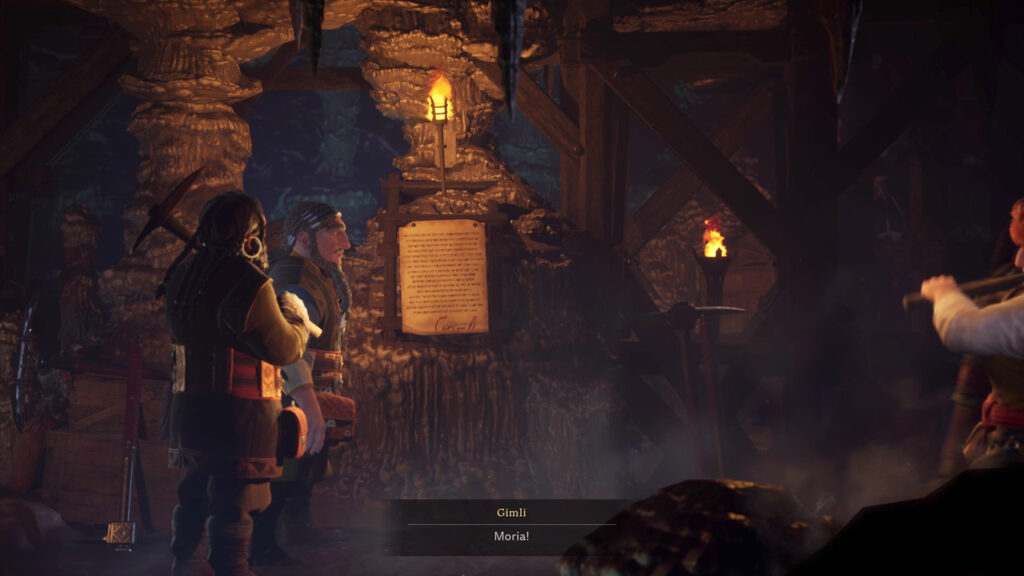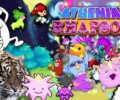
Developer: Free Range Games
Publisher: North Beach Games
Platform: PC, PS4, PS5, Xbox Series X|S
Tested on: PC
The Lord of the Rings: Return to Moria – Review
Earlier this year, we returned to Middle Earth in Gollum, which turned out to be a contender for worst game of the year. As long-time fans of The Lord of the Rings, we were somewhat wary then, when Return to Moria launched, not in the least because of how underexplored the reclamation of Moria is in Tolkien’s writings. We’re not necessarily purists by any means, but games like Shadow of Mordor played things a bit too fast and loose for our liking. Fortunately, lore is one thing that Return to Moria absolutely nails, although it does fall somewhat short in other areas. We swear that last one wasn’t a pun about dwarf height… Let’s just get on to the review, shall we?
Story
Peter Jackson’s adaptation of The Return of the King is well known for having several endings, but it doesn’t quite tie up every loose end of the story of The Lord of the Rings. Sure, Sauron is defeated, but if you harken back to The Fellowship of the Ring, you may realize that the Dwarven realm of Moria is still infested by Goblins, Cave Trolls, and other dwellers in the dark. Return to Moria picks up this loose end and shows how Gimli gathers his kin and sets up an expedition to reclaim his ancestral home. Things go wrong, however, and your self-created dwarf ends up separated from the mining expedition, deep in the pits of Khazad-Dûm. While trying to find their way back to the surface, said dwarf then discovers that there are more than just generic fantasy grunts down there. Dark magic has corrupted Moria, and it’s up to your dwarf (and potentially up to seven other players) to deal with this.
The overarching story is an original one, but unlike the aforementioned Shadow of Mordor, this one doesn’t outright contradict the writings of Tolkien. The attention to detail and respect for the lore that is present in Return to Moria is easily the game’s biggest boon. It’s clear that those responsible did their research on what Tolkien wrote about dwarves. NPCs speak Khuzdul during certain scenes, you’re able to choose what region of Middle Earth your dwarf hails from, and while you’re exploring Moria, you’ll run into many ‘aha’-moments that reference the passing of the Fellowship.
Graphics
Although we absolutely adore Return to Moria’s art direction, it’s hard to deny that the game looks dated. 3D models look relatively simple and even then, the game can’t always keep up a stable frame rate. We understand the need for simplicity, given that the game was designed for online co-op, but the performance is underwhelming, even when playing solo. It’s a shame because Return to Moria nails the dwarven aesthetic seen in Peter Jackson’s films. This is something that is particularly true with the character creator, although we would’ve liked more variety here. That said, what’s present here feels accurate, with female dwarves even having beards, a detail we certainly appreciate. We weren’t necessarily fans of the designs of certain monsters, although that may just be a matter of preference.
Sound
If there’s one thing that got us giddy about Return to Moria’s audio, it’s the return of John Rhys-Davies as the voice of Gimli, although the other voice actors do a fantastic job as well. We particularly enjoyed the many musical numbers. True to Tolkien’s writings, the dwarves are prone to bursting out into songs during mining. The songs here were taken directly from Tolkien’s writings and include a particular track that may sound familiar if you’ve seen An Unexpected Journey. Given the bleak setting of the game, these outbursts of musical prowess really help break up what could have been a monotonous soundscape otherwise. On the other hand, we could have done with a lot less repetitive enemy screaming during combat, especially given that certain encounters can easily go on for upwards of 15 minutes. There isn’t constant singing either, however. Most of the time the soundscape is deliberately sparse, delivering an eerie atmosphere as you trawl through darkened corridors, wary of things lurking in the shadows.
Gameplay
Conceptually, Return to Moria sounds great: an open-world survival game set in the vast realm of the titular dwarven kingdom, that you can tackle both solo or with the aid of friends. No matter if you’re alone or with friends, the story remains the same, although it’s considerably easier to play the game in co-op than tackling the survival game solo. Your main objective is to find your way back to Gimli and his mining expedition, but there are plenty of dangers that stand between you and your kin. Fortunately, there are also plenty of resources and riches too. While you only start out with the bare minimum, you’ll quickly upgrade your basic tools and utilize your inane dwarven instincts to create machinery and weapons that will help you on your quest for survival. There’s more to Return to Moria than a crafting loop, of course. Not only will you need to fight against all kinds of creatures in the deep, but you’ll need to keep an eye on your hunger and weariness as well. Eventually, you’ll set up your own home base, allowing you to manage your resources more efficiently.
Perhaps the strangest design decision about Return to Moria is how linear it feels compared to most other open-world survival games. The game definitely doesn’t center around exploration as much as it could, instead gently but firmly pushing you in specific directions. It occasionally feels like you’re being railroaded from one set piece to the next, even though the world is procedurally generated and thus unique to each hosting player. This means that if you jump into a friend’s version of Moria, you won’t find your way as easily as you should. Given that fast travel is something that requires quite a bit of effort to unlock, as it involves getting black diamonds, which can only be found during a horde attack or by slaying bosses, this means that navigating an unfamiliar version of Moria can be confusing. If you decide to stick to your own procedurally generated environment, on the other hand, you’re probably better off finding a few friends willing to make your world their permanent home, as the game is immensely difficult at times when playing solo.
That difficulty comes from two things. Many of the enemy encounters were seemingly designed to be taken on by multiple players, with those aforementioned horde attacks being the most egregious example. It’s easy to get overwhelmed here, and given that specific resources seem to be tied to these horde attacks, we would have loved to have seen some kind of difficulty scaling depending on the number of players involved, as well as more variety when it comes to actually fighting. Combat is perhaps Return to Moria’s weakest aspect. Fighting enemies is a surprisingly dull affair, with only three actions available to your dwarf, those being light or heavy attacks and a blocking action, and perhaps the worst enemy AI we’ve seen in years. It simply isn’t fun to fight enemies, and the game’s idea of a challenge seems to be to simply overwhelm you with sheer numbers rather than letting you figure out attack patterns or strategize.
The other issue that plagues Return to Moria, in solo mode at least, is that resource gathering is a slow and tedious affair. Mining is an important aspect of the game, both in terms of story and as a mechanic. You can imagine that gathering resources in order to build new machinations is something that goes a lot quicker when playing with eight players, which is the game’s current maximum. Playing through Return to Moria by yourself is a daunting task, taking roughly 45 to 50 hours, much of which will be spent simply grinding out resources or dealing with nameless enemies. In this regard, it can get tedious and dull, especially when playing for a prolonged time. As a co-op game, however, Return to Moria shines a lot brighter, so we highly recommend tackling this one with some like-minded dwarves instead of as a solo affair.
Conclusion
Although Mines of Moria gets a lot right with the way it depicts the reclamation of Moria, the game falls somewhat flat as a solo-player experience. If you’re a diehard fan of The Lord of the Rings, it’s easy to see the appeal of what the game has to offer. For more casual fans, however, the many references may simply go over their heads, and there isn’t enough gameplay substance here to warrant picking this one up, unless you can gather up your own clan of dwarves. As such, we’re a bit on the fence about this one. It’s definitely a better LotR game than Gollum, although that isn’t a high bar to clear, but there are better open-world survival titles out there.










No Comments